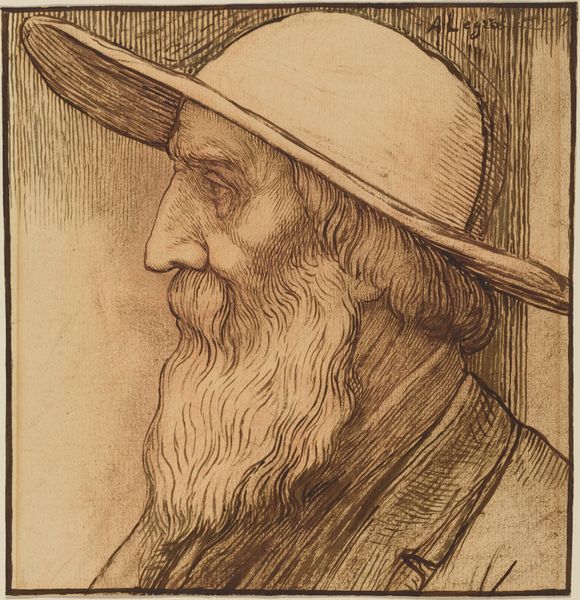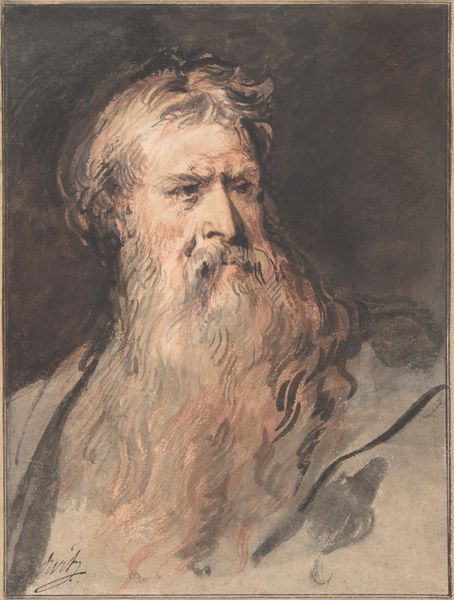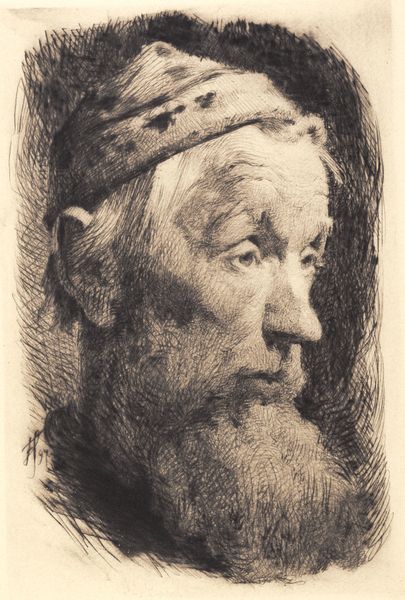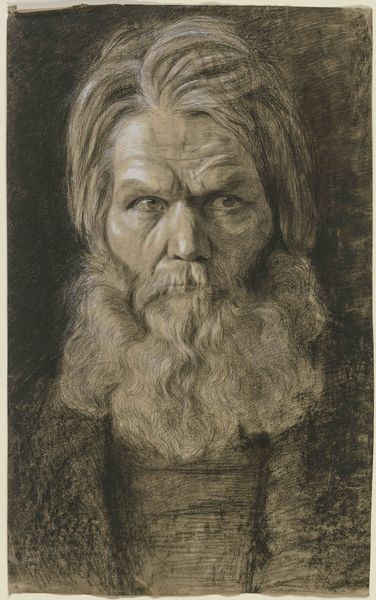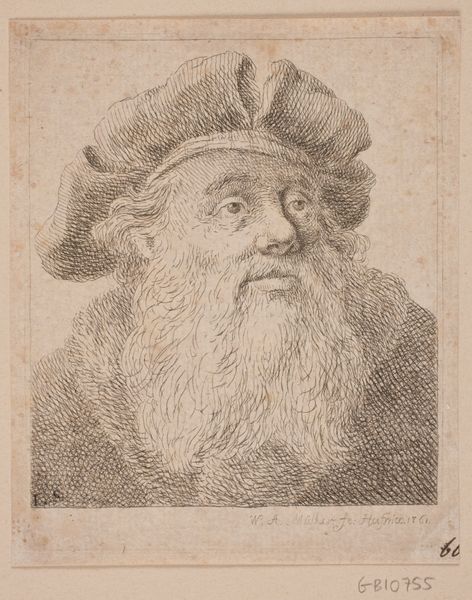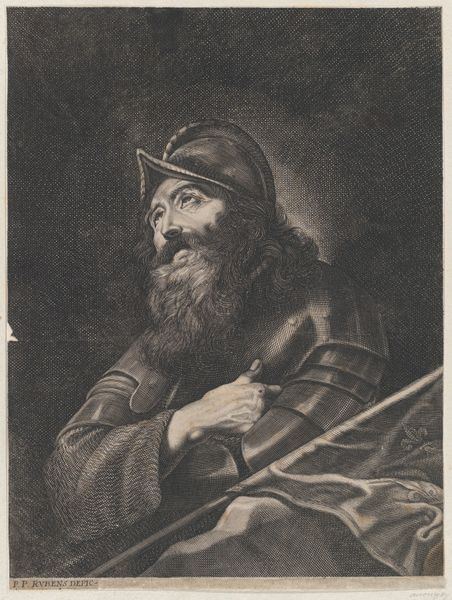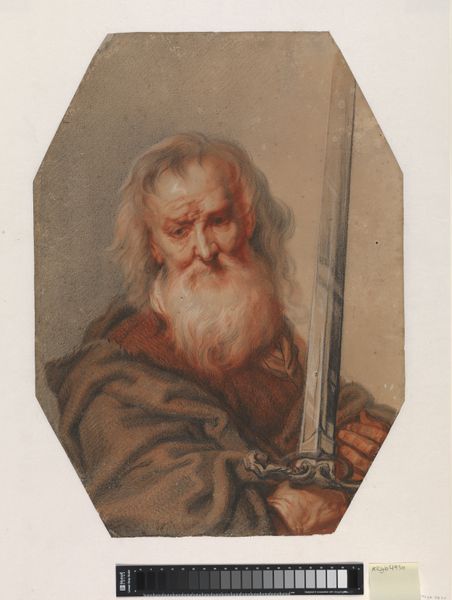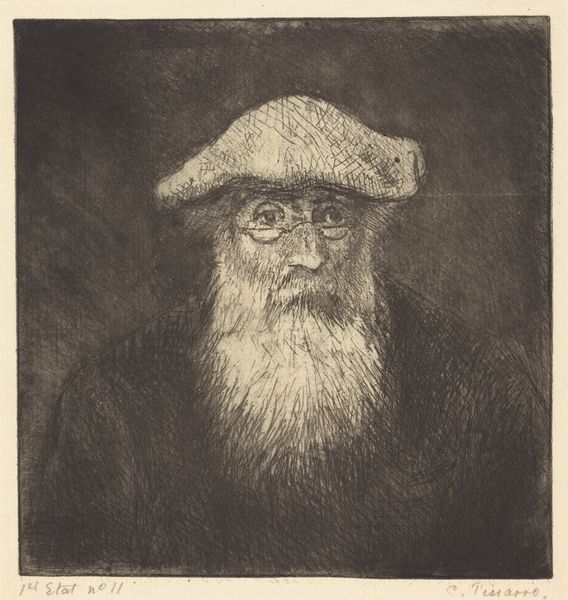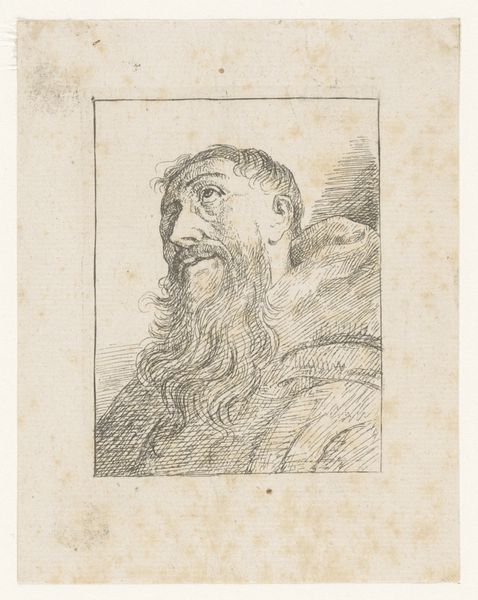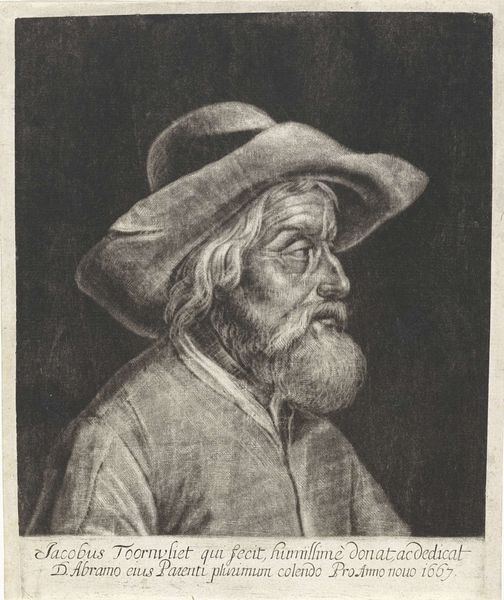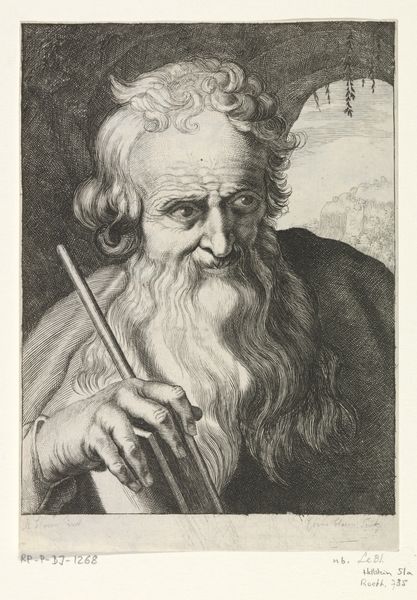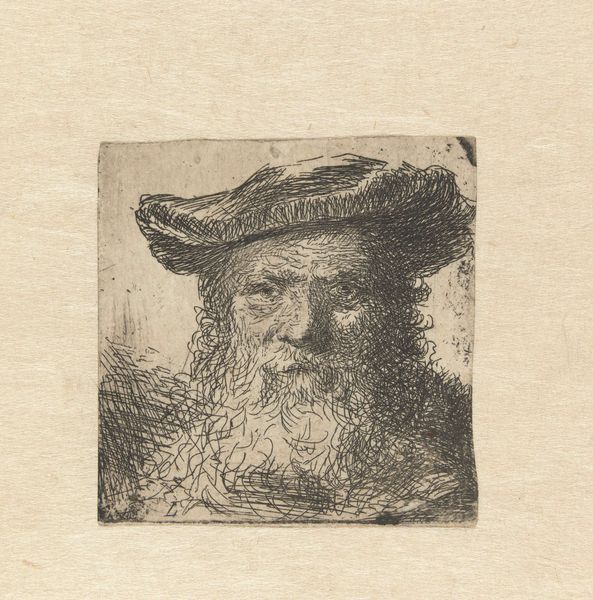
Copyright: Public Domain
Curator: We’re looking at Hans Thoma’s "Wotan as Wayfarer," an ink and charcoal drawing from around 1876. It currently resides here at the Städel Museum. Editor: My first impression? Striking, almost theatrical. The monochrome palette certainly emphasizes the texture—especially that of the beard—and that curious wink certainly provokes more questions than it answers. Curator: Absolutely. Thoma situates this drawing within a broader narrative of Germanic mythology and Romanticism. The figure of Wotan, or Odin, appears often in 19th-century art as a symbol of Germanic identity and folklore. He represents wisdom, poetry, death, divination, and magic—major themes for the Romantics. The wandering is essential. It suggests a search for knowledge but also reflects a sense of displacement, a recurring theme in post-Enlightenment thought. Editor: Indeed, and the composition further amplifies these sensations. Thoma uses light and shadow expertly. Observe how the textures in the cloak or hair guide the viewer’s eye; you will notice that those lines subtly underscore the themes of nature versus spirituality in both figure and form. Curator: And let's not overlook the crows—huginn and muninn —Thought and Memory perched so confidently on Wotan's shoulder, as if dictating the very stories he might tell. Their presence reaffirms a profound connection between inner life, social memory, and individual purpose. The use of mythological themes could reflect growing nationalism across Europe in the 19th century, as communities searched for figures around which they might unite. Editor: It all comes back to that compelling portrait drawing quality, that use of line! The interplay between the textured charcoal marks and the clean, deliberate strokes create tension. It captures Wotan as not just a mythological figure but as a tangible, almost pained individual caught between worlds. Curator: Looking through an intersectional lens, it makes you wonder what nuances are overlooked when national mythologies become so idealized, particularly concerning marginal figures—women and colonized peoples left out of these grandiose historical imaginings. Editor: Quite. Even though that intense use of tone ultimately points to complex narrative, this is still an intriguing piece for visual engagement. The careful orchestration of the form results in powerful expressions about universal conditions. Curator: Indeed. It invites conversations far beyond Germanic myths—perhaps it will inspire thinking about modern struggles around national identities, historical representation, or the costs associated with collective belonging.
Comments
No comments
Be the first to comment and join the conversation on the ultimate creative platform.
